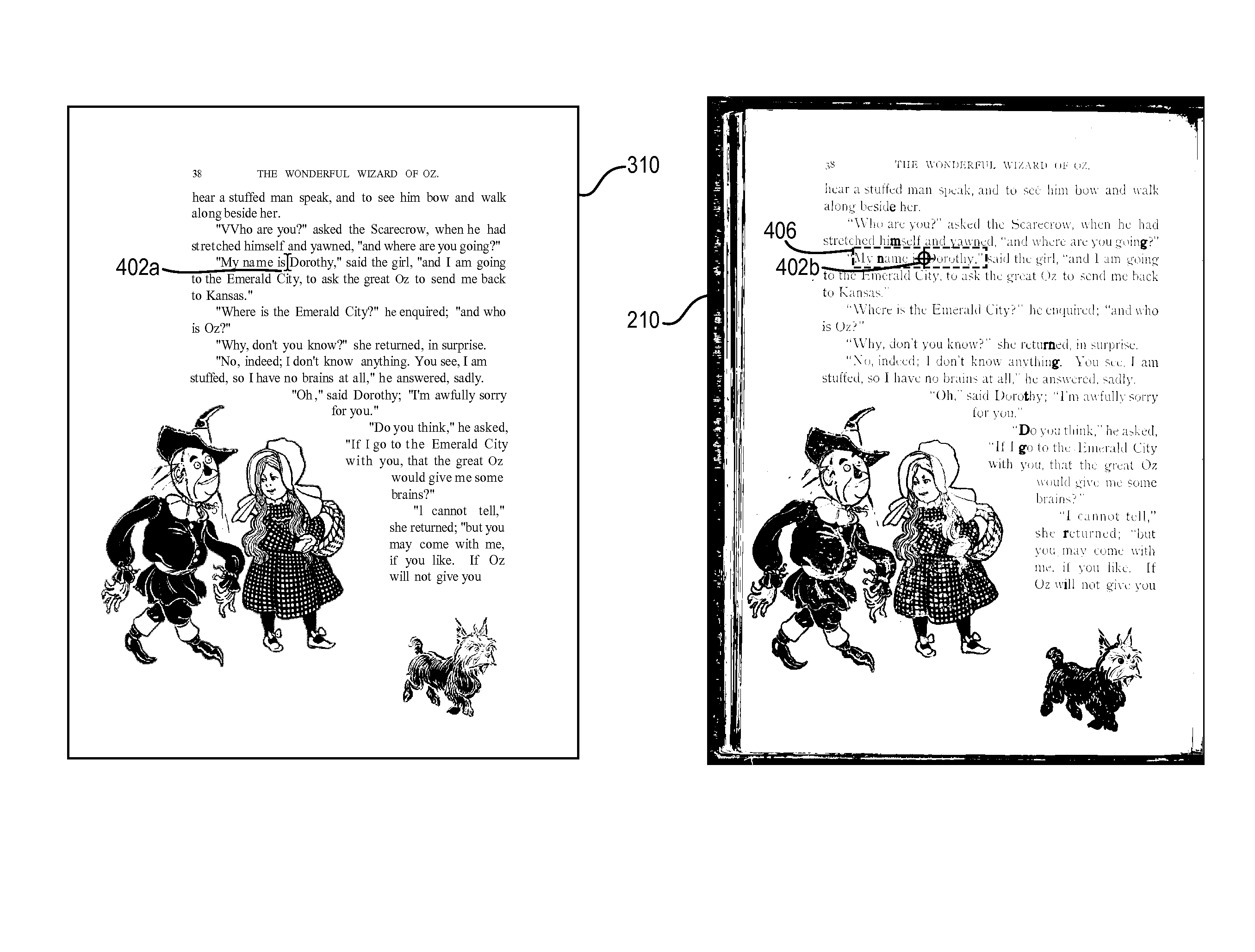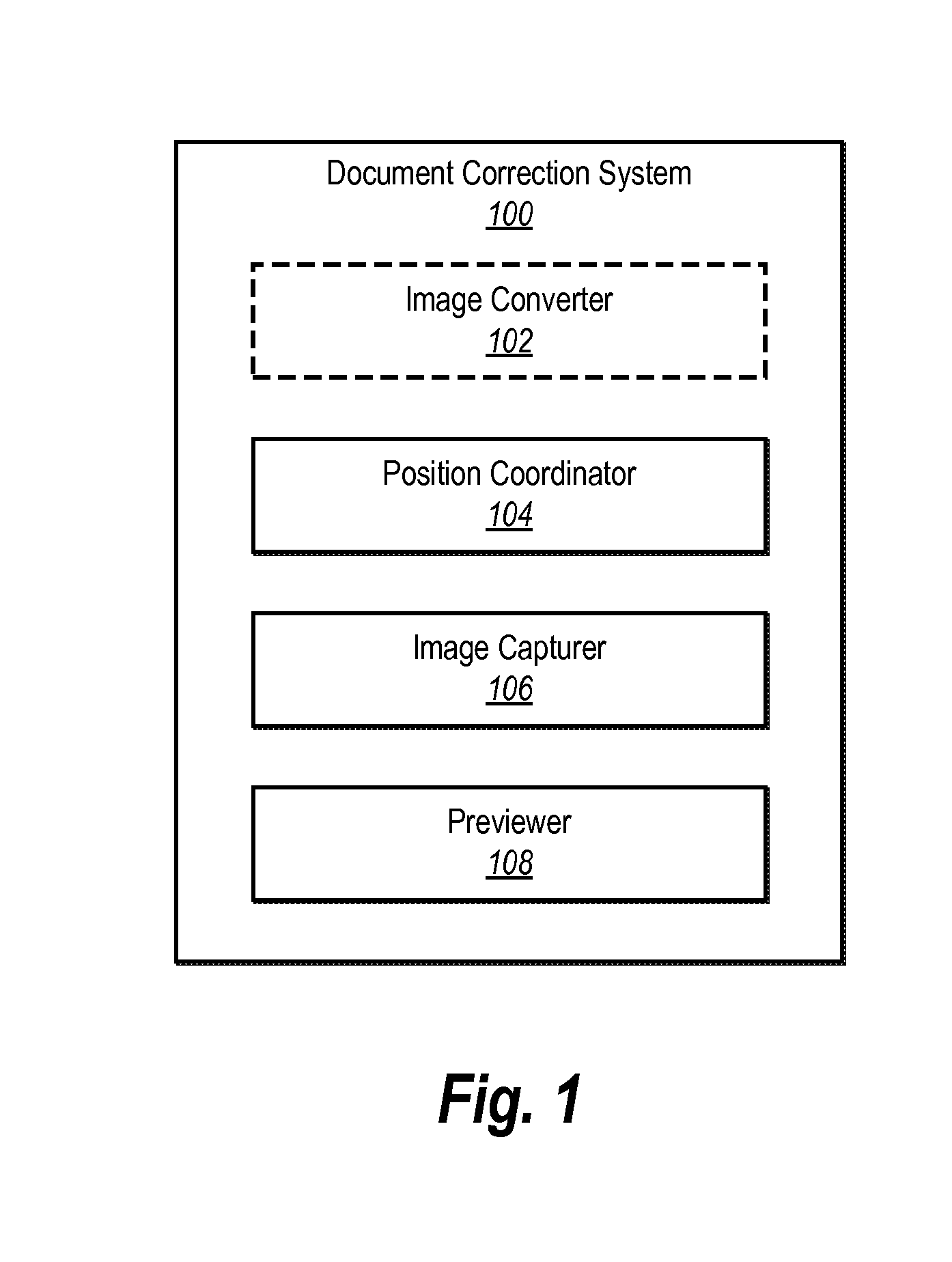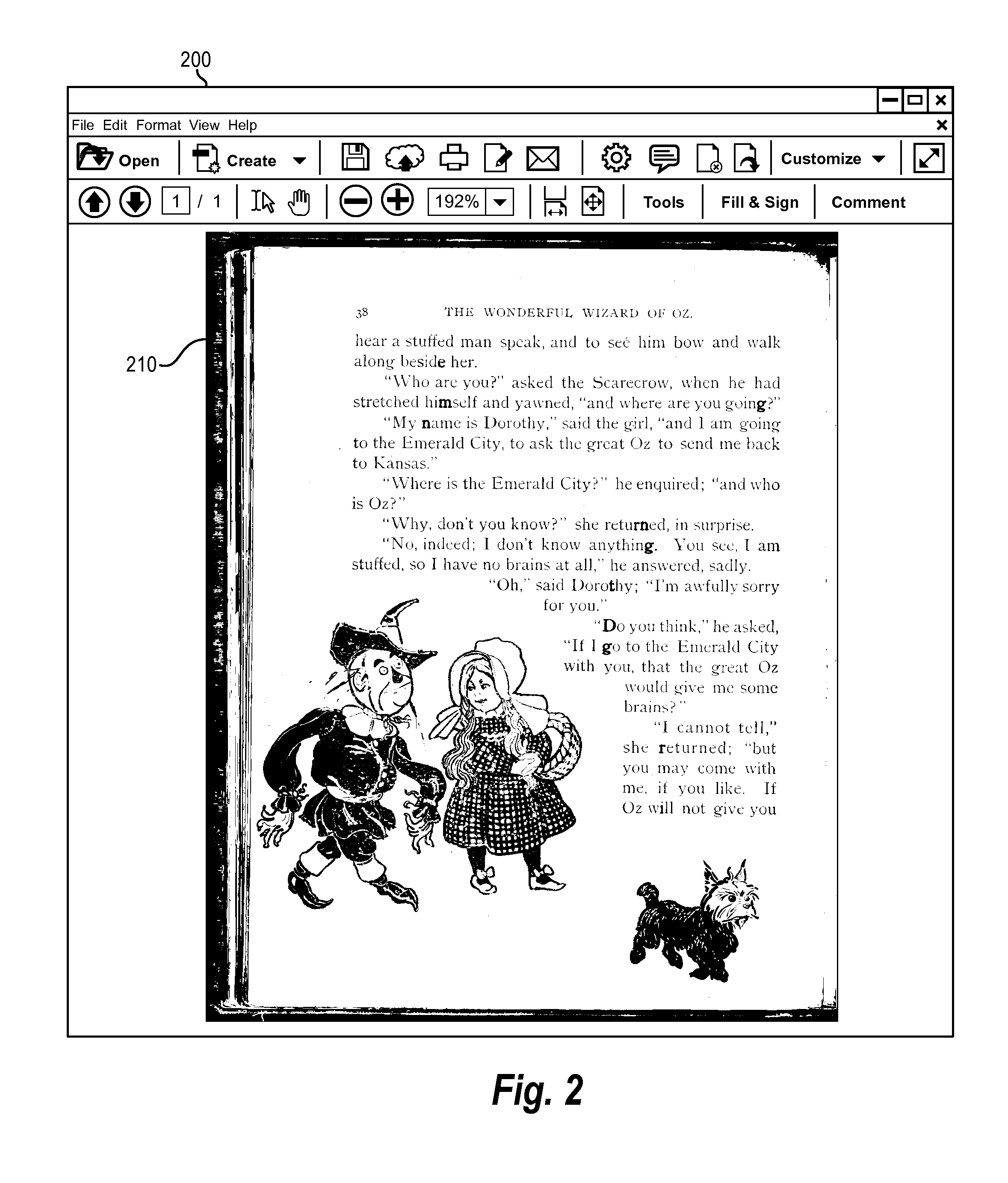Providing in-line previews of a source image for aid in correcting OCR errors
a source image and in-line preview technology, applied in the field of editing optical character recognition errors, can solve the problems of unusable converted text, ocr errors that are often produced by conventional ocr systems, and can not be easily corrected, so as to achieve the effect of effective and easy correction of ocr errors
- Summary
- Abstract
- Description
- Claims
- Application Information
AI Technical Summary
Benefits of technology
Problems solved by technology
Method used
Image
Examples
Embodiment Construction
[0027]One or more embodiments of the present disclosure include a document correction system that assists a user in editing a machine-readable document. To illustrate, the document correction system can provide a machine-readable document to the user. For example, the document correction system can convert an image with recognizable text into a document having machine-readable text. The machine-readable document may include text, such as words, letters, or characters that the document correction system did not properly recognize and / or convert (e.g., OCR errors). The user may identify OCR errors in the machine-readable document and desire to correct them. As the user moves a cursor around the machine-readable document to edit the OCR errors, the document correction system can provide a preview of the source image to the user to assist the user in editing the machine-readable document. In particular, the preview can include a portion of the source image that corresponds to the locati...
PUM
 Login to View More
Login to View More Abstract
Description
Claims
Application Information
 Login to View More
Login to View More - R&D
- Intellectual Property
- Life Sciences
- Materials
- Tech Scout
- Unparalleled Data Quality
- Higher Quality Content
- 60% Fewer Hallucinations
Browse by: Latest US Patents, China's latest patents, Technical Efficacy Thesaurus, Application Domain, Technology Topic, Popular Technical Reports.
© 2025 PatSnap. All rights reserved.Legal|Privacy policy|Modern Slavery Act Transparency Statement|Sitemap|About US| Contact US: help@patsnap.com



